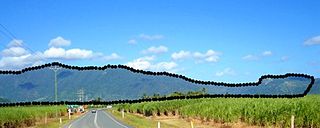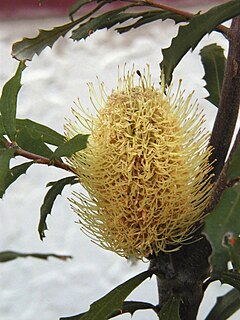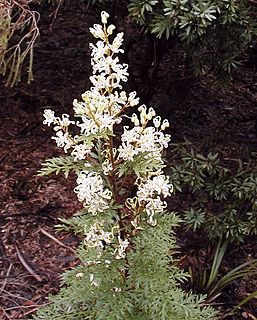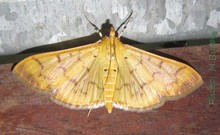
The Cricket World Cup is the international championship of One Day International (ODI) cricket. The event is organised by the sport's governing body, the International Cricket Council (ICC), every four years, with preliminary qualification rounds leading up to a finals tournament. The tournament is one of the world's most viewed sporting events and is considered the "flagship event of the international cricket calendar" by the ICC.

Australian Aboriginal religion and mythology is the sacred spirituality represented in the stories performed by Aboriginal Australians within each of the language groups across Australia in their ceremonies. Aboriginal spirituality includes the Dreamtime, songlines, and Aboriginal oral literature.
The 1975 Cricket World Cup was the inaugural Cricket World Cup, and the first major tournament in the history of One Day International (ODI) cricket. Organised by the International Cricket Conference (ICC), it took place in England between 7 June and 21 June 1975.

A totem is a spirit being, sacred object, or symbol that serves as an emblem of a group of people, such as a family, clan, lineage, or tribe.

Carols by Candlelight is an annual Australian Christmas tradition that originated in southeastern Australia in the 19th century and was popularised in Melbourne in 1938. The tradition has since spread around the world. It involves people gathering, usually outdoors in a park, to sing carols by candlelight, featuring live performances by both national and international celebrities accompanied by a symphony orchestra.

Merewether High School is a government-funded co-educational academically selective secondary day school, located in the suburb of Broadmeadow in the city of Newcastle, in the Lower Hunter Region of New South Wales, Australia.

The hairpin banksia is a species of woody shrub, of the genus Banksia in the family Proteaceae, native to eastern Australia. Widely distributed, it is found as an understorey plant in open dry forest or heathland from Victoria to northern Queensland, generally on sandstone though sometimes also clay soils. It generally grows as a small shrub to 2 metres (7 ft) in height, though can be a straggly tree to 6 metres (20 ft). It has long narrow leaves with inflorescences which can vary considerably in coloration; while the spikes are gold or less commonly yellowish, the emergent styles may be a wide range of colours – from black, purple, red, orange or yellow.

Banksia canei, commonly known as the mountain banksia, is a species of shrub that is endemic to southeastern Australia. It is generally encountered as a many-branched shrub that grows up to 3 m (10 ft) high, with narrow leaves and the yellow inflorescences appearing from late summer to early winter. The old flowers fall off the spikes, and up to 150 finely furred follicles develop, which remain closed until burnt in a bushfire. Each follicle bears two winged seeds. Response to fire is poorly known, although it is thought to regenerate by seed. Birds such as the yellow-tufted honeyeater and various insects forage among the flower spikes. It is frost tolerant in cultivation, but copes less well with aridity or humidity, and is often short-lived in gardens. One cultivar, Banksia 'Celia Rosser', was registered in 1978, but has subsequently vanished.

Banksia speciosa, commonly known as the showy banksia, is a species of large shrub or small tree in the family Proteaceae. It is found on the south coast of Western Australia between Hopetoun (33°57′ S) and the Great Australian Bight, growing on white or grey sand in shrubland. Reaching up to 8 m (26 ft) in height, it is a single-stemmed plant that has thin leaves with prominent triangular "teeth" along each margin, which are 20–45 cm (7.9–17.7 in) long and 2–4 cm (0.8–1.6 in) wide. The prominent cream-yellow flower spikes known as inflorescences appear throughout the year. As they age they develop up to 20 follicles each that store seeds until opened by fire. Though widely occurring, the species is highly sensitive to dieback and large populations of plants have succumbed to the disease.

Lampides boeticus, the pea blue, or long-tailed blue, is a small butterfly that belongs to the lycaenids or gossamer-winged family.

The king brown snake is a species of highly venomous snake of the family Elapidae, native to northern, western, and Central Australia. Despite its common name, it is a member of the genus Pseudechis and only distantly related to true brown snakes. Its alternative common name is the mulga snake, although it lives in many habitats apart from mulga. First described by the English zoologist John Edward Gray in 1842, it is a robust snake up to 3.3 m (11 ft) long. It is variable in appearance, with individuals from northern Australia having tan upper-parts, while those from southern Australia are dark brown to blackish. Sometimes it is seen in a reddish-green texture. The dorsal scales are two-toned, sometimes giving the snake a patterned appearance. Its underside is cream or white, often with orange splotches. The species is oviparous. The snake is considered to be a least-concern species according to the International Union for Conservation of Nature (IUCN), though may have declined with the spread of the cane toad.

The brown honeyeater belongs to the honeyeaters, a group of birds found mainly in Australia and New Guinea, which have highly developed brush-tipped tongues adapted for nectar feeding. It is a medium-small brownish bird, with yellow-olive panels in the tail and wing, and a yellow tuft behind the eye.
Ballet Theatre of Queensland, founded in 1937 by Phyllis Danaher FRAD, is the oldest continuous dance company in Australia. Ballet Theatre is based in Brisbane in the Australian state of Queensland.
OzGirl is an Australian web series that ran from February to June, 2009. The series consists of 24 episodes, of between five and seven minutes each. The final episode was broadcast live on-air.
Grevillea pteridifolia is a species of Grevillea native to Australia. Common names include silky grevillea, Darwin silky oak, ferny-leaved silky oak, fern-leaved grevillea, golden grevillea, golden tree and golden parrot tree. It occurs in Western Australia, Northern Territory, and Queensland.

Persoonia cornifolia is a plant in the family Proteaceae and is endemic to eastern Australia. It is a shrub with elliptic to egg-shaped leaves and hairy yellow flowers, and grows in northern New South Wales and south-eastern Queensland.

Lomatia silaifolia, commonly known as crinkle bush or parsley fern, is a plant of the family, Proteaceae native to eastern Australia. Naturally found in open forest, it grows as a small shrub 1–2 m high with highly pinnate leaves reminiscent of parsley. The white inflorescences appear in summer.

Patania balteata is a moth of the family Crambidae. It was described by Johan Christian Fabricius in 1798. It is found across southern Europe, Africa and Asia, including Japan, Korea, Réunion, Madagascar, Taiwan, Thailand, Turkey and Ukraine, as well as New South Wales and Queensland in Australia. There is also an old record from Hawaii.

Hakea arborescens, commonly known as the common hakea or the yellow hakea, is a shrub or tree of the genus Hakea native to parts of northern Australia.
Ninox boobook ocellata is a subspecies of southern boobook. The southern boobook is the most common and smallest owl on the Australian mainland. The sub species is characterised by its lighter colour than other sub species, and is generally found in a wide range of habitats. Ocellata is the smallest of the boobook subspecies as it is found in the warmer western parts of Australia. although it is not found in arid areas. The Boobook can be commonly known as the ‘mopoke’ due to its call. This owl is often confused with the barking owl due to their similar appearance, however the boobook is a fair amount smaller. The boobook feeds on insects and small vertebrates.















